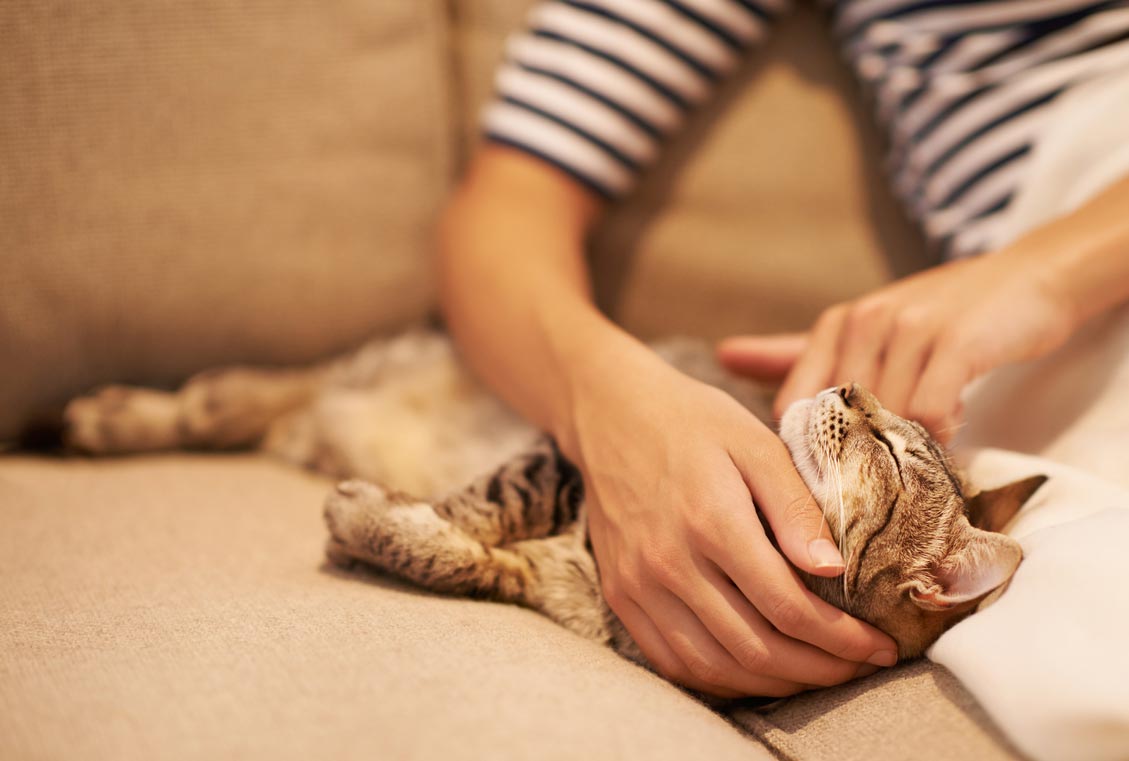How to Properly Pet a Cat

Did you know that there are right and wrong ways to pet a cat? If not, the odds are that your cat or someone else's will try to teach you. Since that might involve sharp teeth or nails, it's better to learn the proper petting technique here.
Cats Aren't All the Same
If you've been around cats at all, you've probably interacted with one that acts like she wants to be petted but then turns quickly toward your hand as though to bite it.
You've probably also handled a cat that seems to love touching of all kinds.
Finally, you've more than likely encountered a cat that doesn't want to be approached at all.
The first thing to know about petting cats is that they are not all the same. Especially if you're dealing with a cat that you don't know, it's important to watch her body language. If she is standing off, not approaching you, with a stiff body posture, it's best not to attempt to pet her or to do so slowly. If a cat's ears lay back against her head when you approach, she crouches and moves backward, her eyes widen and pupils dilate, or she growls or hisses, leave her alone.
What the Research Has Shown
A study was recently undertaken to attempt to learn how cats like to be petted (Sarah Lesley Helen Ellis, 2015). Researchers wanted to know if cats prefer being touched by humans in certain spots and if those spots are different when the petter is a familiar versus an unfamiliar person.
First, the researchers videotaped 36 cats in their homes on two separate days. On one of the days, the cats were observed while their owner petted them while, on the other day, they were observed while a stranger stroked them. This allowed the researchers to see how the same cat reacted to owner touch and stranger touch.
When the videos were studied later, researchers looked for several cat behaviors to indicate that the cats liked being petted in a particular area. These behaviors included:
- Kneading
- Slow eye blinking
- Licking or rubbing on the person or licking themselves
- Holding their tail up
Researchers also looked at behaviors that indicated the cats didn't like being petted in a certain area. These behaviors included:
- Moving away from the person
- Licking their lips
- Attempting to bite or scratch the person
- Tail-flicking
The researchers found that the cats did not enjoy being petted near their tails, either by their owners or by strangers. They determined that cats most enjoyed being stroked on the head, face, and chin, especially where the scent glands are located on the bottom of the face and between the eyes and ears. Interestingly, this is also where cats tend to greet one another, rubbing each other's faces.
It's important to note that a large majority of the cats in the research study left the area before either the owner or the stranger could pet them in all of the spots that were tested. After all, cats will be cats.
Avoid Petting Cats' Tails
According to this research study and what many cat owners already know, most cats don't appreciate being petted around the tail. Of course, individual cats may be different, and you know your cat best. However, when approaching a cat you don't know, focus your petting on her head and stay well away from her tail.
It's also important to know the signs that a cat isn't enjoying your petting, so you can leave her alone. If you don't, you may be injured. If you're petting a cat and she suddenly turns toward your hand, she's letting you know that you should stop. If she starts flicking her tail in a jerky manner, she doesn't like what's going on. If she walks away from you, let her go gracefully rather than trying to force her to accept your affection.
If you have a cat that seems to want you to pet her but then turns to snap at you suddenly, check out the article "Petting Induced Aggression in Cats."
Works Cited
- Sarah Lesley Helen Ellis, H. T. (2015, Dec.). The influence of body region, handler familiarity and order of region handled on the domestic cat's response to being stroked. Retrieved from Applied Animal Behavior Science: DOI: 10.1016/j.applanim.2014.11.002.
You May Also Like These Articles:
Cat Kneading: Why Do Cats Do It and What Do People Call It?
How to Decide on an Indoor or Outdoor Lifestyle for Your Cat
Five Reasons Cats Urinate Outside of the Litter Box
How to Train Your Cat to Walk on a Leash
Are You Shortening Your Cat's Life? - Slideshow
Abyssinian Cats: An Interview with Fancy Cat
Notice: Ask-a-Vet is an affiliated service for those who wish to speak with a veterinary professional about their pet's specific condition. Initially, a bot will ask questions to determine the general nature of your concern. Then, you will be transferred to a human. There is a charge for the service if you choose to connect to a veterinarian. Ask-a-Vet is not manned by the staff or owners of CatHealth.com, and the advice given should not delay or replace a visit to your veterinarian.




